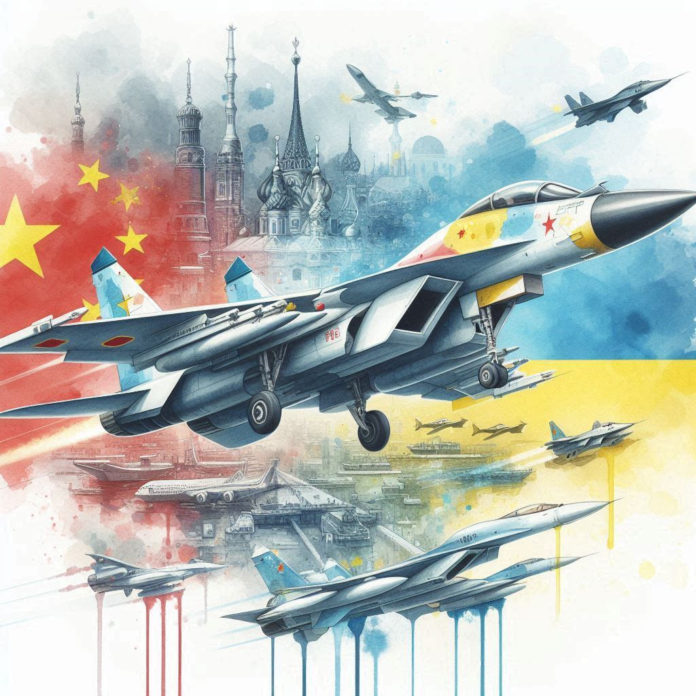One of the most significant examples of China’s showcase of Military strength is the development of the Shenyang J-15 “Flying Shark,” a fighter jet that plays a crucial role in China’s naval power. But what many may not know is that the J-15 was not entirely designed by China. It is, in fact, a reverse-engineered version of a Russian fighter, the Su-33, which China acquired indirectly through Ukraine.
China’s Use of Ukrainian Technology to Build Shenyang Fighter Jets
China had long tried to get the Su-33 from Russia, a powerful fighter jet used by Russia’s navy. However, Russia was hesitant and ultimately refused to sell it. The reason was that China had previously copied another Russian jet, the Su-27, and Russia didn’t want that to happen again. But instead of giving up, China found another way. It got its hands on an unfinished Su-33 prototype from Ukraine and used that to reverse-engineer its own fighter jet, the J-15.
The Ukrainian T-10K-3 prototype, initially part of the Soviet-era Su-33 naval fighter development program, played a pivotal role in the development of China’s J-15 carrier-based fighter jet. After the dissolution of the Soviet Union, Ukraine inherited various military assets, including the T-10K-3 prototype.
How Reverse Engineering Played a Key Role
Reverse engineering is when you take apart a product and study how it works to create your own version of it. In this case, China took the Su-33 prototype from Ukraine and carefully examined it to build their own jet, the J-15.
China added its own technology to improve certain parts of the jet. For example, the Shenyang J-15 originally used Russian engines, but later, China started using its own engines, the WS-10B.
The Shenyang J-15 first took to the skies in 2009 and was tested for use on aircraft carriers in 2012. Aircraft carriers are massive ships that allow fighter jets to take off and land in the middle of the ocean. This makes the J-15 a key part of China’s naval forces because it can be used far from the country’s shores.
However, the J-15 has faced some challenges. Some experts say it is too heavy to be effective on aircraft carriers. The jet has also had issues with its flight control systems, and there have been reports of crashes. Even so, China continues to produce these jets and improve them, as they are an essential part of its growing military power.
The Broader Impact on U.S. and Global Security
The J-15 is not just a regular fighter jet; it represents China’s broader military ambitions. China’s naval forces are becoming more powerful, especially in the Indo-Pacific region, which includes the South China Sea, a highly contested area where multiple countries, including the U.S., have interests. China’s development of the J-15 and its military buildup pose a challenge to the U.S. and other countries in the region.
While the Shenyang J-15 is often compared to American fighter jets like the F/A-18 Super Hornet, there are debates about how it measures up. China claims that its jet is superior in certain ways, such as having a higher bomb load, a longer range, and better mobility. However, U.S. jets are generally considered more advanced when it comes to electronic systems and overall combat effectiveness.
Implied Warning to China; US Deploys F-22 Raptors in South Korea Amid Geopolitical Tensions
The development of the Shenyang J-15 highlights how China uses technology from other countries, like Ukraine and Russia, to build up its military power. By reverse-engineering these technologies, China can produce its own versions of advanced weapons without having to rely on foreign countries. This allows China to become more independent and strengthen its military capabilities.
At the same time, the tensions between China and Russia over intellectual property theft show how complex international relationships can be. Russia did not want to sell the Su-33 to China because it believed China had already copied another one of its jets, the Su-27. This led to a breakdown in the relationship between the two countries when it came to selling advanced military technology.
Japanese Fighter Intercepts Chinese WL-10 Drone Over East China Sea
Despite these tensions, China has continued to push forward with its military development, using whatever means necessary to achieve its goals. This includes buying or copying technology from other countries, as seen with the Shenyang J-15.
China’s use of Ukrainian technology to develop the Shenyang J-15 “Flying Shark” highlights its determination to build a strong military force. By reverse-engineering foreign technology, China has been able to create its own advanced fighter jets, even in the face of international challenges. The J-15 is a clear example of how China’s military ambitions are growing, and it plays a significant role in the country’s broader strategy to assert itself on the world stage.


